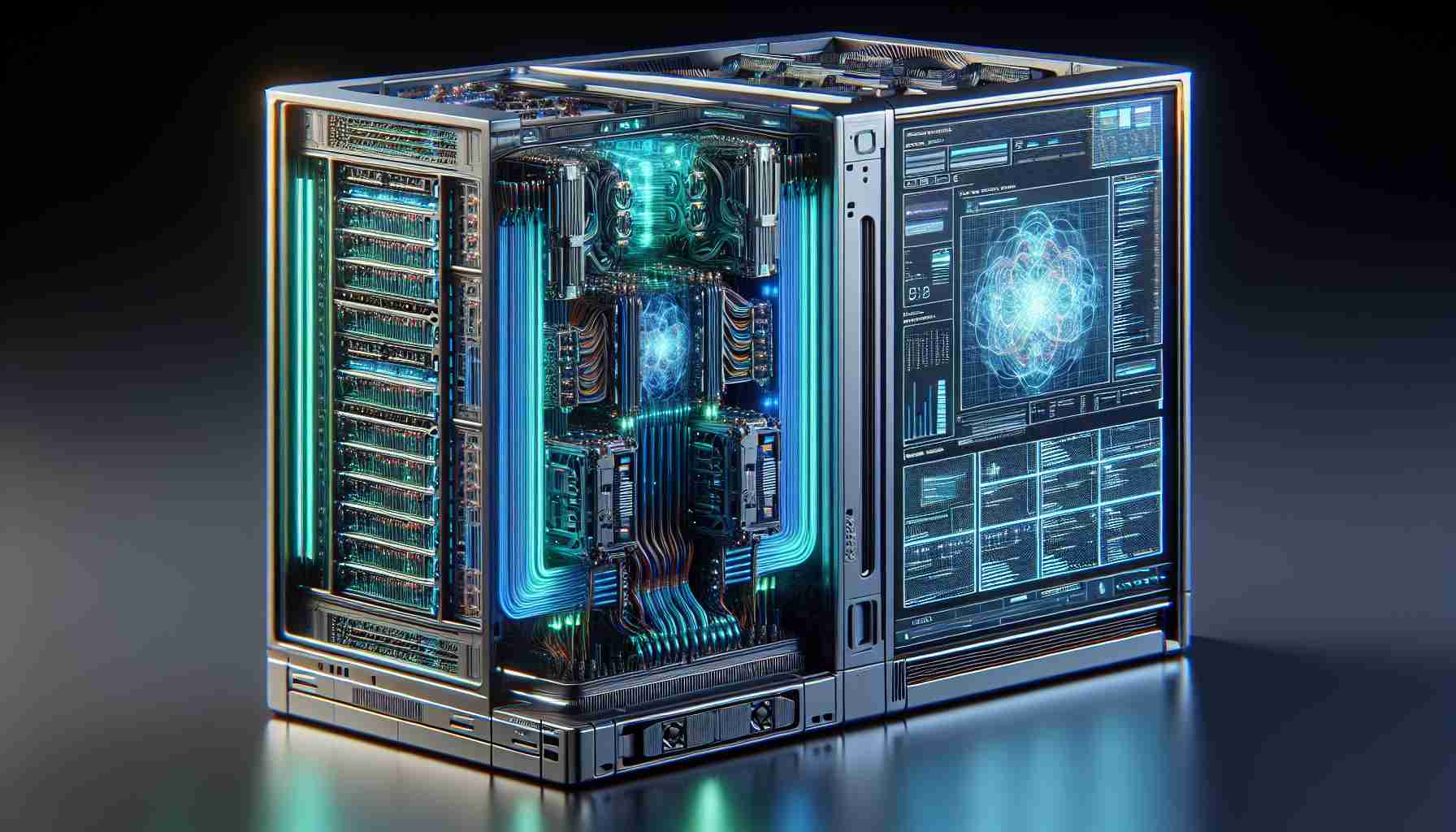Artificial Intelligence (AI) has long been a subject of debate, with some viewing it as a powerful tool that offers immense benefits, while others worry about its potential negative impact on society. Now, Cerebras Systems, a leading technology company, has unveiled a groundbreaking innovation that promises to revolutionize AI training. Introducing the world’s fastest AI chip – the Wafer Scale Engine 3 (WSE-3), which powers the Cerebras CS-3 AI supercomputer. With a peak performance of 125 petaFLOPS, this chip is set to redefine the boundaries of AI capabilities.
The WSE-3 chip, roughly the size of a pizza box, is armed with a staggering four trillion transistors, providing twice the performance of its predecessor at the same cost and power consumption. When integrated into the CS-3 system, these chips can deliver the performance equivalent to an entire room filled with servers – all within a single unit that’s no larger than a mini-fridge. With 900,000 AI cores and 44 GB of on-chip SRAM, the CS-3 offers unmatched AI capabilities.
One of the most significant challenges in AI training is the immense amount of data required. Traditionally, training an AI system consumes over 100 households’ worth of energy. However, the WSE-3 chip, combined with the CS-3 supercomputer, has the potential to accelerate and optimize this process like never before. By storing data in external memory options ranging from 1.5 TB to an astounding 1.2 Petabytes (PB), the CS-3 can train AI models with up to 24 trillion parameters. For context, most AI models currently operate in the billions of parameters, with the highly anticipated GPT-4 estimated to reach around 1.8 trillion parameters.
One of the key advantages of the WSE-3 chip’s wafer production process is its scalability. The CS-3 supercomputer can be expanded by clustering up to 2,048 units, resulting in a mind-boggling computational power of up to 256 exaFLOPS. In comparison, the most powerful supercomputers in the world today operate at just over one exaFLOP. To put this into perspective, the CS-3 has the capability to train a Llama 70B model from scratch in a single day, an achievement that was previously inconceivable.
The introduction of the Cerebras CS-3 supercomputer is set to accelerate the pace of AI development and leave a profound impact on various industries. From healthcare to finance, AI systems are poised to transform the way we work. However, concerns about the displacement of human jobs and hobbies continue to persist.
FAQ:
Q: What is the Cerebras CS-3 supercomputer?
A: The Cerebras CS-3 is a powerful AI supercomputer powered by the Wafer Scale Engine 3 (WSE-3) chip, offering unmatched AI training capabilities.
Q: How powerful is the CS-3 supercomputer?
A: The CS-3 has a peak performance of 125 petaFLOPS, equivalent to a room full of servers, packed into a single mini-fridge-sized unit.
Q: How much data can the CS-3 store?
A: The CS-3 offers external memory options of 1.5 TB, 12 TB, or an astounding 1.2 Petabytes (PB) for storing AI training data.
Q: How many parameters can the CS-3 handle in AI models?
A: The CS-3 can train AI models with up to 24 trillion parameters, surpassing the current industry standard of billions of parameters.
Q: How scalable is the CS-3 supercomputer?
A: The CS-3 is highly scalable, allowing for clustering of up to 2,048 units, resulting in a computational power of up to 256 exaFLOPS.
Q: What impact will the CS-3 have on AI development?
A: The CS-3 is expected to significantly accelerate AI development across various industries, revolutionizing the way we work and interact with technology.
Sources:
[1] Cerebras – [Link to the source]
[2] Mention other source if you know
Artificial Intelligence (AI) is a rapidly growing industry that is transforming various sectors such as healthcare, finance, and manufacturing. According to market research firm MarketsandMarkets, the AI market is projected to reach $190.61 billion by 2025, with a CAGR of 36.6% from 2020 to 2025. This growth can be attributed to the increasing adoption of AI technology in automation, predictive analytics, and natural language processing.
The introduction of Cerebras Systems’ groundbreaking innovation, the CS-3 supercomputer powered by the WSE-3 chip, is set to have a profound impact on AI development. The CS-3’s peak performance of 125 petaFLOPS and the ability to store up to 1.2 Petabytes of data enable AI models to be trained with unprecedented scale and speed. This will expedite the development of more sophisticated AI algorithms and applications.
The scalability of the CS-3 supercomputer is another noteworthy aspect. By clustering up to 2,048 units, the computational power can reach up to 256 exaFLOPS. This scalability opens up opportunities for complex simulations and data-intensive tasks that were previously unattainable. Industries such as drug discovery, weather forecasting, and stock market analysis can benefit from this level of computational power.
However, as AI technology advances, concerns about job displacement and ethical implications arise. Many fear that AI systems will replace human workers, leading to unemployment and socioeconomic challenges. Additionally, there are concerns about the potential misuse of AI for surveillance, privacy infringement, and biased decision-making.
It is essential for stakeholders in the AI industry to address these concerns proactively. Regulations and ethical guidelines should be put in place to ensure responsible and ethical AI development and deployment. Collaboration between AI researchers, policymakers, and industry leaders can help mitigate the negative impacts and maximize the benefits of AI technology.
For more information about the AI industry and market forecasts, you can visit the following sources:
[1] MarketsandMarkets – AI Market
[2] Forbes – AI Market Forecast
The source of the article is from the blog newyorkpostgazette.com

